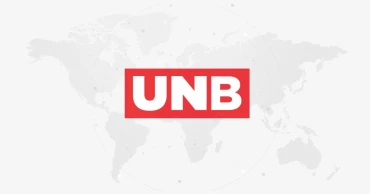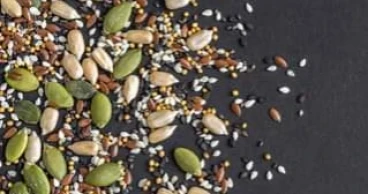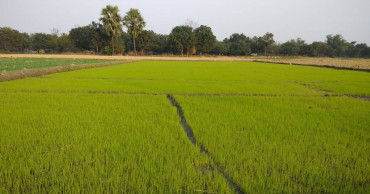seed
Govt moves toward 100% paperless services for Smart Bangladesh by 2041
The government has announced plans to make all its services completely paperless. This initiative is part of the broader “Smart Bangladesh by 2041” vision, aiming to leverage frontier technologies to transform governance.
According to an official document recently presented in the Parliament, the government aims to achieve 100 percent paperless, simplified, and personalized services. “All government services will be made 100 percent paperless, simplified, and personalized to enable frontier-technology-driven on-demand services,” the document states.
Key components of this transformation include making all services accessible and interoperable through the Smart Bangladesh Stack, a digital infrastructure framework. Additionally, data-driven, AI-based dashboards will be introduced for all ministries and departments to enhance decision-making processes.
By 2041, the government aims to significantly improve its standing in the UN e-Government Development Index, targeting a rank below 50. It also seeks to increase the tax-GDP ratio to at least 22 percent through technological advancements.
Finance Minister outlines vision for 'Smart Bangladesh' in National Budget for FY 2024-25
Another critical goal is to ensure universal and quality healthcare for all citizens, reinforcing the government's commitment to comprehensive social welfare.
One of the strategic goals for Smart Bangladesh is to establish the country as an innovative nation by 2041. To achieve this, the government is nurturing the next generation of freelancers, CMSME entrepreneurs, and startup founders.
The "One Family, One SEED" initiative is a key part of this strategy, aiming to provide Smart Employment and Entrepreneurship Development (SEED)-based facilities to at least one member of every family by 2041. This initiative is designed to cultivate a robust culture of entrepreneurship across the country.
Additionally, the government is running the "Her Power Project: Empowerment of Women with the Help of Technology," which provides IT training to 25,125 women across 130 upazilas in 44 districts. After completing the five-month training program, each participant receives a one-month mentorship and a laptop.
Building a “Smart Bangladesh”: Digital skills and IDs for all by 2041
The government is actively supporting young entrepreneurs through the Innovation Design and Entrepreneurship Academy (IDEA) project, offering training and financial assistance. As part of decentralizing the innovation ecosystem, the Smart Bangladesh Launchpad is being established as a venture studio to foster new business ventures and startups.
To further support startups, the government has established Startup Bangladesh Limited Company, a venture capital firm that invests in startups at both the seed and growth stages and engages in policy formulation at the national level.
Under the Mission Government Brain (G-Brain), several AI-powered initiatives are being developed, including Personalized Learning InvestorGPT, LawGPT, HealthGPT, and ClimateGPT. These initiatives aim to integrate artificial intelligence into various sectors to enhance efficiency and service delivery.
To facilitate the transition to smart governance, several initiatives have been launched. These include the Government Email Policy 2018 and the integration of 18,434 government offices, including 47 ministries/departments and 64 District Commissioners' offices, into a unified network.
The Bangladesh Computer Council (BCC) has also taken steps to implement e-signature technology without the need for dongles, with 273 officers currently using e-signatures. Additionally, the development of the Digital Municipality Service System (DMSS) is underway, providing e-services in nine municipalities and one city corporation with support from KOICA.
Empowering Change: Policy Dialogue on disability inclusion in SMART Bangladesh held in city
The 'National Municipal Digital Service' project aims to expand these services to 329 municipalities, offering 11 e-services. An ERP system with nine modules is being developed to make government offices paperless, with five modules already in use in the ICT and planning departments.
To bridge the gap between the government and the public, the 'Janatar Sarkar' citizen interactive web portal has been launched. This portal currently connects 11 ministries/departments, facilitating transparent and interactive communication between citizens and the government.
1 year ago
10 Delicious Quinoa Recipes for Weight Loss
Weight loss is a journey that often requires a balance between nutritious meals and regular exercise. If you are looking for a healthy and tasty food to shed extra pounds, try quinoa. It offers a blend of protein, fibre, and essential nutrients. Quinoa, originating from South America, has gained immense popularity due to its health benefits and versatility in the kitchen.
Key Health Benefits of Quinoa
Quinoa is a superfood. It offers a range of benefits that make it a desirable addition to any diet. Here are some of its key advantages:
- High in protein, aiding in muscle development and repair- Rich in fibre, promoting a feeling of fullness and aiding in digestion- Low glycemic index, making it suitable for diabetics- Packed with essential vitamins and minerals like iron, magnesium, and B vitamins.
This nutritous grain can be a game-changer in losing weight in a healthy way.
Read more: 7 Healthy, Delicious Egg Recipes for Breakfast
10 Tasty Quinoa Recipes for Losing Weight
Quinoa Bowls
Ingredients
1/2 cup quinoa (rinsed), 1/8 teaspoon salt, 2 tablespoons honey, 1/2 cup almond milk, 1/2 cup fruit (like blueberries), 1/4 cup walnuts (coarsely chopped), and 1 banana (sliced).
Instructions
First, add quinoa and water to a saucepan. Sprinkle some salt and bring it to a boil. Reduce the heat and let it simmer for 15 minutes, covered. Once most of the water is absorbed, fluff it up with a fork.
Then, add milk and honey and give it a good stir. Divide the delicious mixture into two bowls. Finish off by garnishing with almond milk, fruits, banana slices, and nuts. Time to savour!
Read more: Top Traditional Bangladeshi Foods You Must Try
Quinoa with Vegetables
Ingredients
125 grams white quinoa, 1/2 medium zucchini (diced), 1/2 green bell pepper (diced), 1/2 green and yellow chilli (chopped), 2 apricots (optional, diced), 250 ml vegetable stock, 1 teaspoon salt, 1 spring onion stalk, 100 grams rajma (shelled), 2 garlic cloves, 1 tablespoon olive oil, a few sage leaves, and a few rosemary leaves.
2 years ago
Top 10 Healthy Seeds to Eat
Nutrition plays significant roles for a human’s overall health and mental well-being. Adding seeds to one’s regular diet have numerous health benefits. Let’s discuss different types of seeds and their respective health benefits.
What Are Seeds?
All flowering plants reproduce through seeds. In simple words, a seed is the tiny, round or oval, hard component of a plant that works as the starting point of a new plant. More scientifically, a seed is a small embryonic ‘plant’, surrounded by a protective layer called the seed coat with certain reserved nutrients. In an appropriate environment, each seed has the potential to develop into a new plant.
How Seeds are Different from Nuts, Grains, and Beans
While many confuse seeds, nuts, grains, and beans; they are all different types of plant-based foods with unique characteristics. Though they share some similarities in terms of their nutritional content, they have differences.
Seeds are the reproductive parts of plants with high protein like chia seeds, sesame seeds. They are rich with healthy fats, fiber, vitamins and minerals.
Read More; Sweet Potato Health Benefits: The Organic Affordable Super Food
Nuts are the fruits of certain trees like almonds, peanuts. They are generally high with healthy fats, protein, fiber and various vitamins and minerals.
Grains are actually the seeds of grasses such as wheat, rice. They are a good source of carbohydrates, fiber, minerals and some essential vitamins.
Beans are the edible seeds of legume plants, such as lentils, kidney beans. Beans are nutritious with protein, fiber, various vitamins and minerals.
Each of these foods has unique properties that make them valuable additions to a healthy and varied diet.
Read More: Best and Worst Foods for Brain, Memory, Focus
How to Eat Seeds
Seeds are known as nutritional powerhouse. They are not just delicious and easy to consume but also convenient for people of all ages. Thus, just having proper digestion is not sufficient. It is vital to ensure that these nutrients are absorbed effectively by the body.
The next question that arises is the appropriate way to consume seeds. Eating them raw is the only way to derive nutrition from the seeds. It expands to soaked, ground or mashed particularly when added with other foods.
It is suggested to soak seeds overnight before consumption. Although soaking provides numerous benefits, the most significant is the removal of phytic acid found on them. Overnight soaking is the most effective method for this.
When selecting seeds, raw and unsalted varieties are recommended. Seeds, coated or roasted, or with added sugar coatings must be avoided.
read more: Natural Sweeteners: 7 Healthy Alternatives of Refined Sugar
10 Healthiest Seeds
Seeds may be small in size, but when it comes to nutrition it is packed with vitamins, minerals and healthy fats. This tiny powerhouse can provide the energy needed for the day ahead. In fact, seeds can be nutritious yet satisfying and a delicious filling snack. Here are the 10 healthiest seeds with benefits to boost overall health.
2 years ago
Khulna farmers losing interest in boro paddy cultivation
Low prices for crops in the previous season, the burden of loans and costly labour are discouraging an increasing number of farmers from growing boro paddy this year.
Agricultural experts said farmers in the southern region are turning away for various reasons, including increasing agriculture labour wage. This year, Khulna farmers did not buy 900 metric tonnes of boro seed of BADC.
Locals said aman paddy on 25,000 hectares and vegetables on 864 hectares of land were damaged during cyclone ‘Bulbul’. Besides, pest infestation damaged crops on several hundred acres in Rupsha, Botiaghata and Dumuria upazilas.
Farmers could not harvest anything but straws. Thousands of farmers were affected. Besides, they did not get fair prices for their produces in the aman season.
Md Liaqat Ali, Deputy Director of Khulna BADC (Seed), said cyclones ‘Fani’ and ‘Bulbul’ caused massive damage to farmers.
“There was a high demand for hybrid variety of,seed. Besides, many farmers opted for onion due to the unexpected price hike,” he said.
Sources at the agricultural office said 2,000 metric tonnes of seeds were allocated in the BADC’s warehouse of Satkhira, Kaliganj and Bagerhat for the current season. These include BR-26, BR-28, BRI-29, BRI-47, BRI-58, BRI-63, BRI-67, BRI-74, BRI-81 and BRI-86 varieties of paddy.
6 years ago







